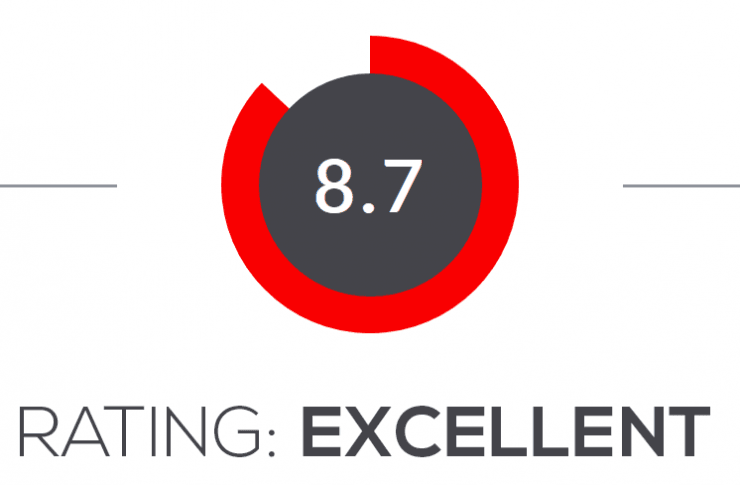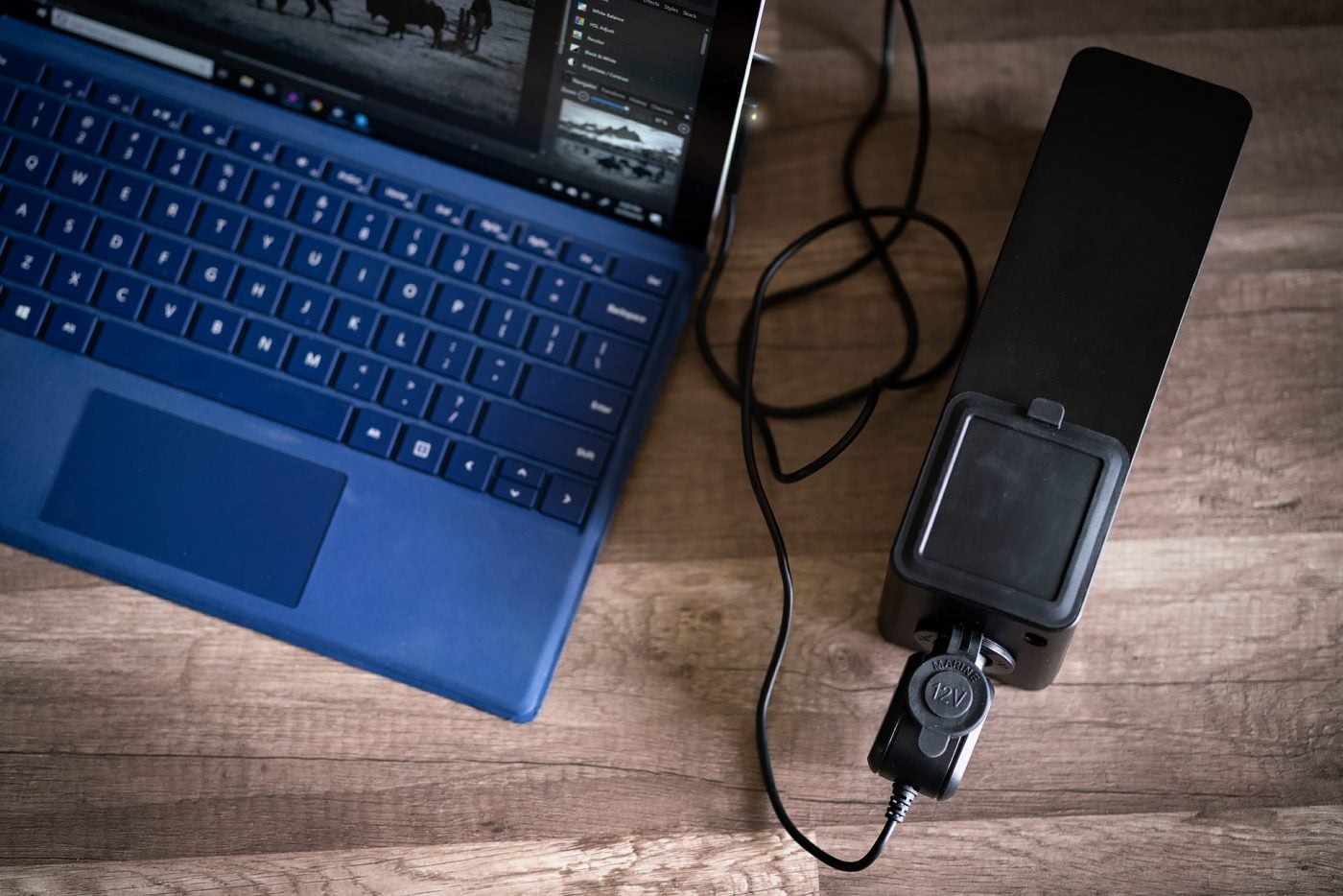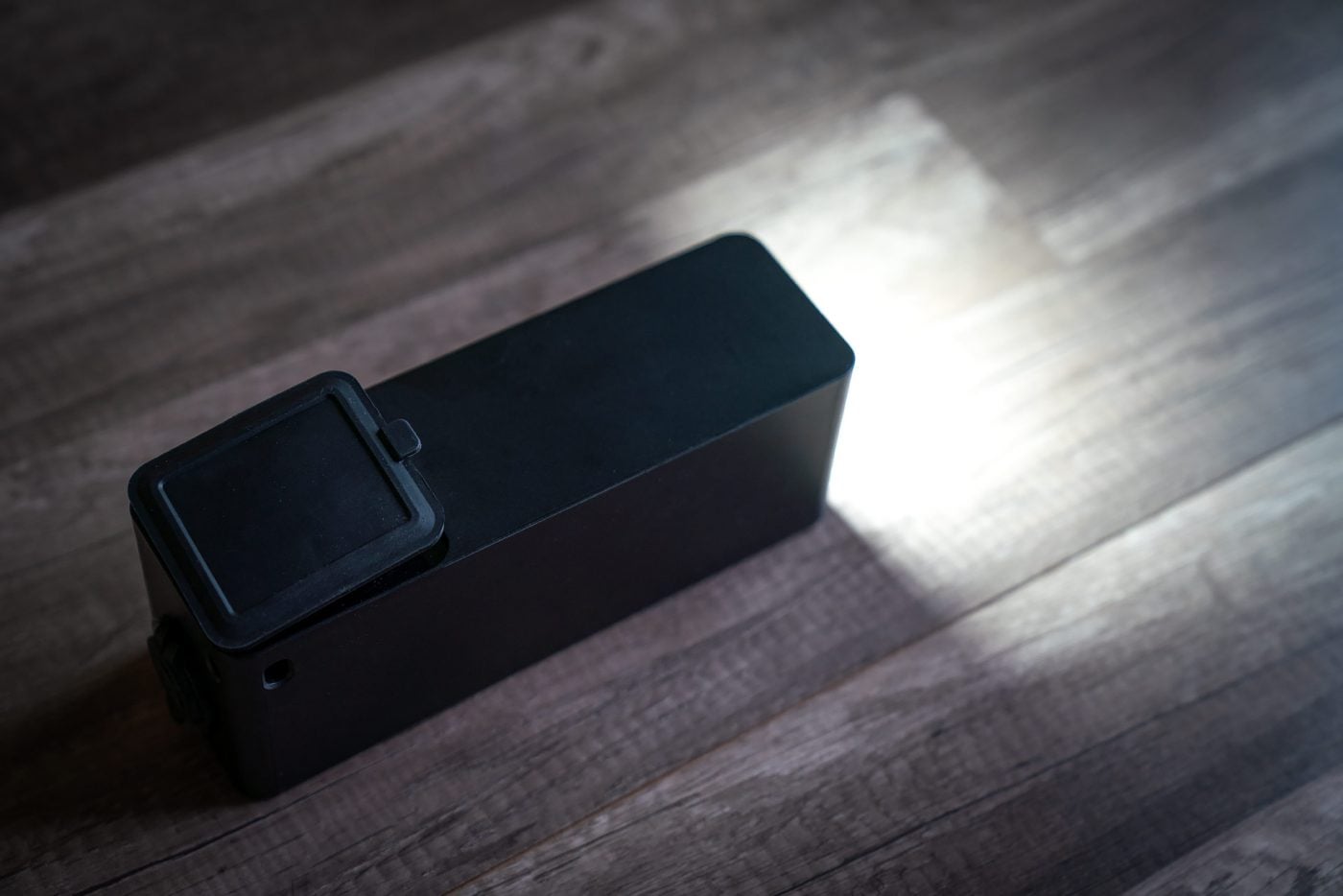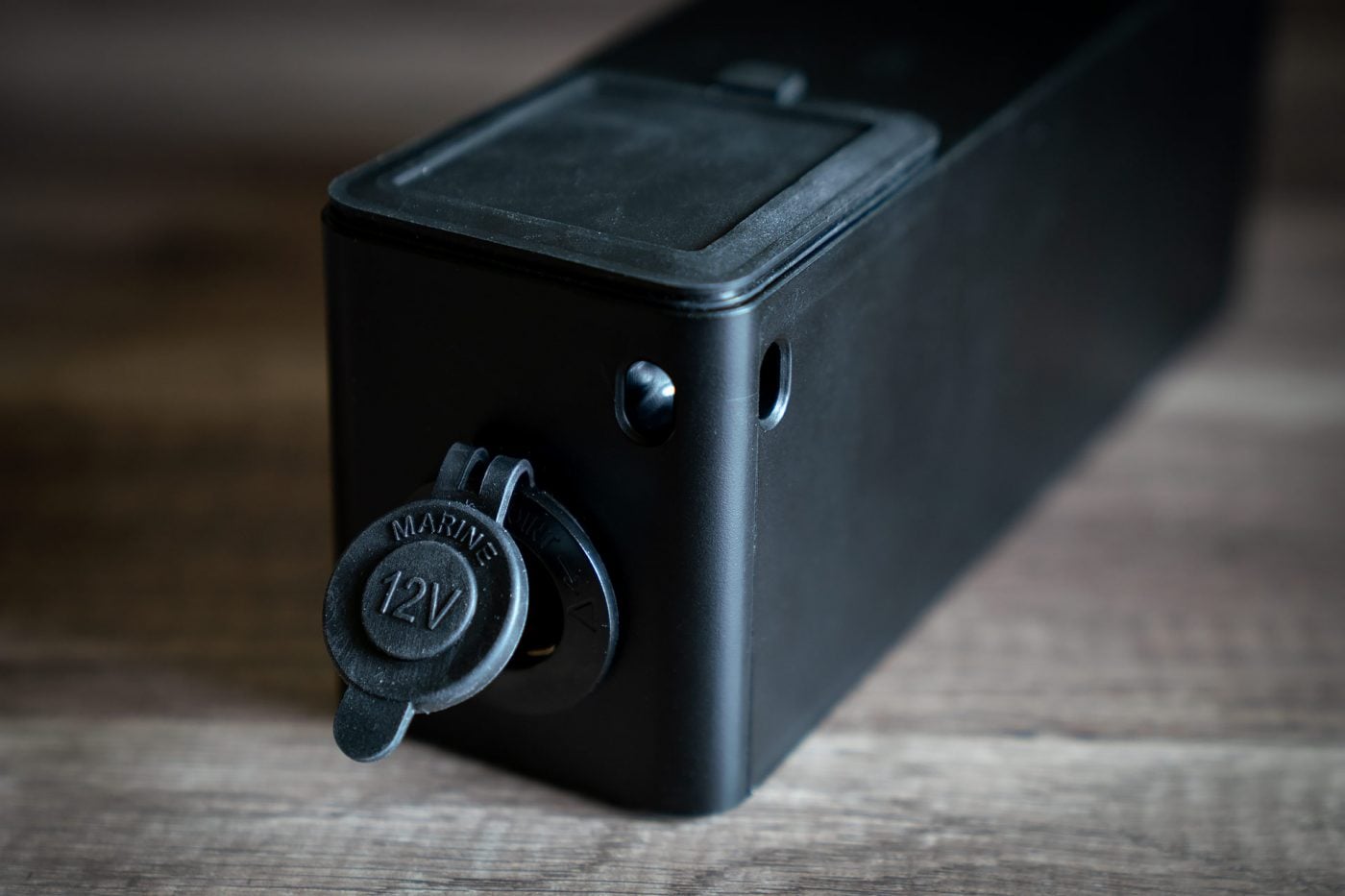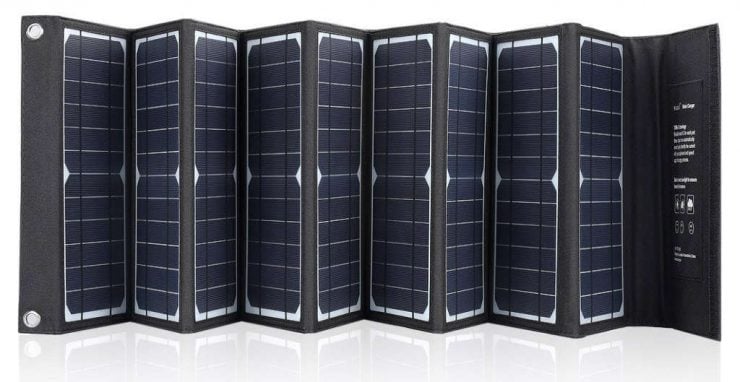Like most photographers these days, I have some pretty intensive power requirements when I’m out shooting: phone, tablet, mirrorless cameras, flashes, lights… the list goes on and on. When I’m near an outlet, it’s no problem, but when I’m not? We’ve all been there. In the airport, where six people are already huddled around the lone power outlet on the concourse. In an old bus across Morocco, or a cross country flight in coach for that matter. On the train from Cologne to Prague. In a tent on the Olympic Peninsula, with work to do, and a battery icon that has just turned red.
These are the times when I’d rather be rescued by the PowerElf than Legolas.
The PowerElf is a 46.8Ah power-bank that is currently being launched on IndiGoGo for $129. That’s 46,800mAh… a lot of power. For comparison, the expensive batteries ($80) in my Sony A7RIII, hold about 2.3Ah each (2280mAh). It holds seventeen times the capacity of an iPhone X. It has a variety of outlets to power small devices like phones and also larger ones, like laptops and tablets.
I got an early production model to test out1 The manufacturer provided this unit to me for free, but I never provide positive reviews in exchange for money or goods. This review is as honest and objective as I can make it. I have not and will not receive payments for any sales of this unit, but as always, if you purchase any products through my ads and affiliate links on this site, you we will hopefully get a commission . Let’s take a look.
What Can the PowerElf Do?
There are four power outlets on the PowerElf: 1 x 12v cigarette-lighter port, 2 x Standard USB ports, 1 USB-C Port (45 Watt), and 1 x 9-12v output for a standard barrel adapter plug (and a cable is included). There’s an input jack of the same size to plug it into the wall and charge the thing. It also has a built-in LED flashlight (modes: on, flashing, red, red-flashing2 Be aware that when flashing red, the light sends a morse-code SOS signal. This is an international distress call, and should not be used lightly. ) and it has a power-button.
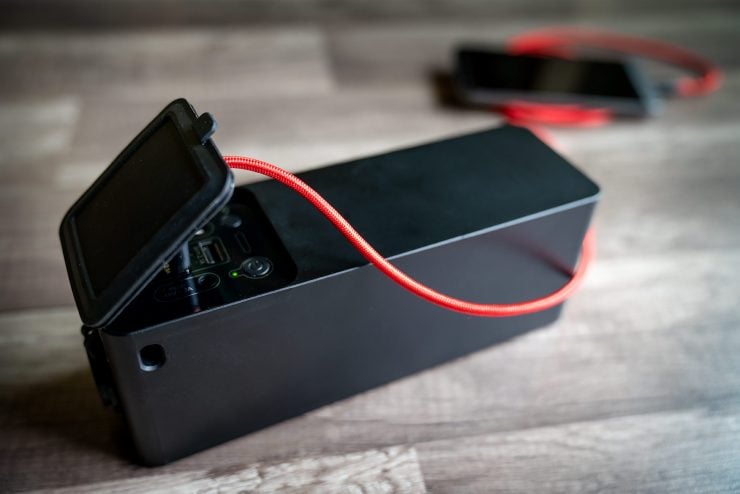
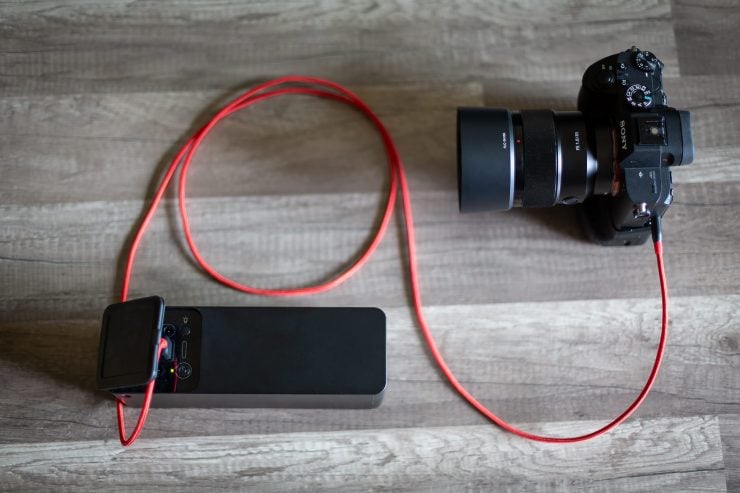
The USB ports will work like the much smaller power-banks that you probably already own, but it will last longer. The standard USB ports offer 2.4A at 5v. The USB-C is Quick Charge 3.0. (Incidentally, the red, braided-nylon USB cables in these photos are made by Anker, and I love them).
Where this thing gets really cool is the cigarette-lighter jack. This puts out enough current to power and charge my Microsoft SurfacePro tablet, no problem, and it’s always my first device to go dead when I’m away from a power outlet. Awesome.
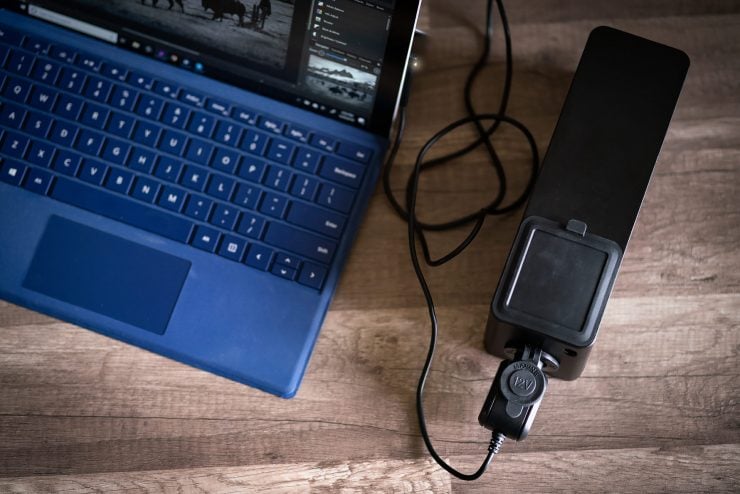
Need more options? This seems to work: I plugged in a little 100W power inverter, and then plugged in a little table lamp. No problem. Of course, there will be a limit to what you can power, but you’ll be able to power a fair number of household items with this setup.
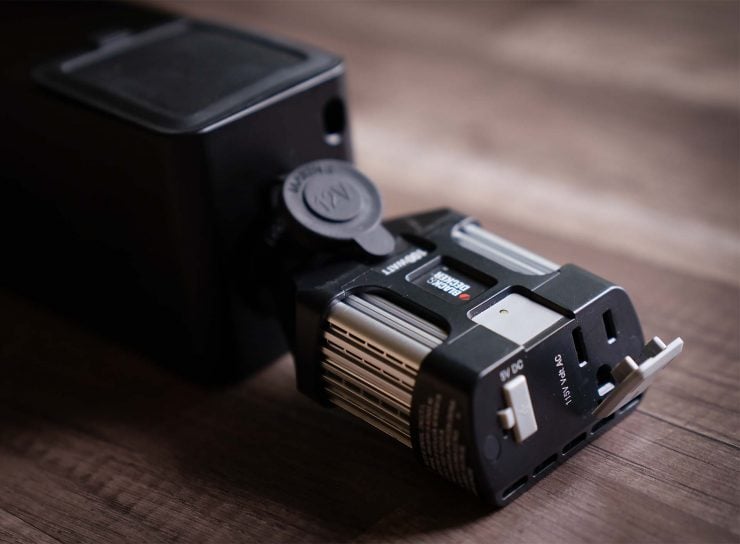
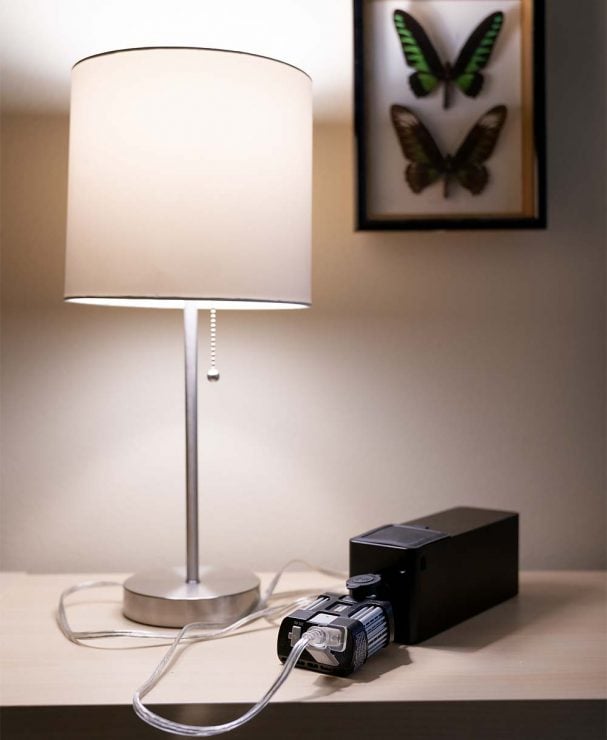
The 9-12v barrel jack can power/charge a laptop with the same size jack. If you want to use this for a Surface, you can also buy a cable that fits here. It turns out that the jack is a pretty standard size, so I tried it with a variety of things around the house. All of these things powered on.
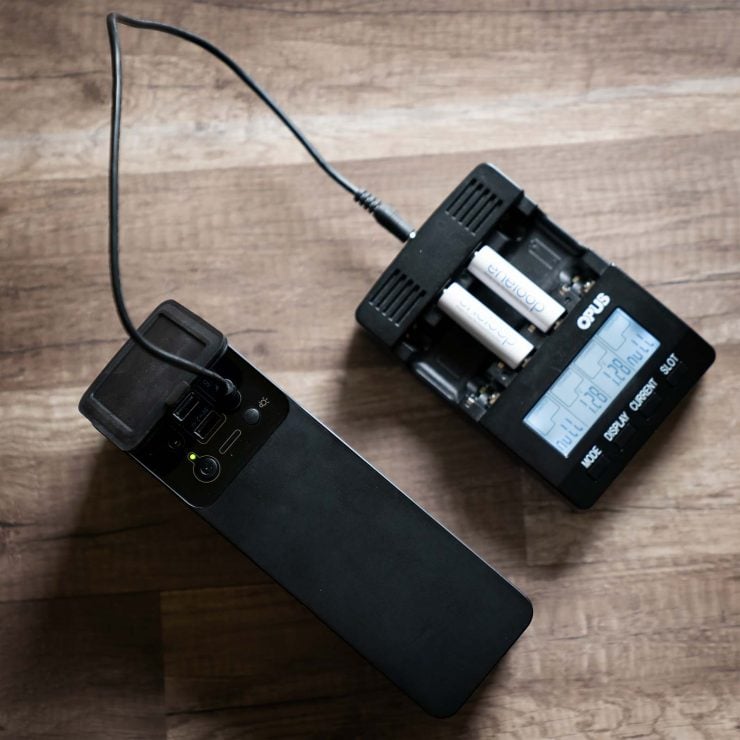

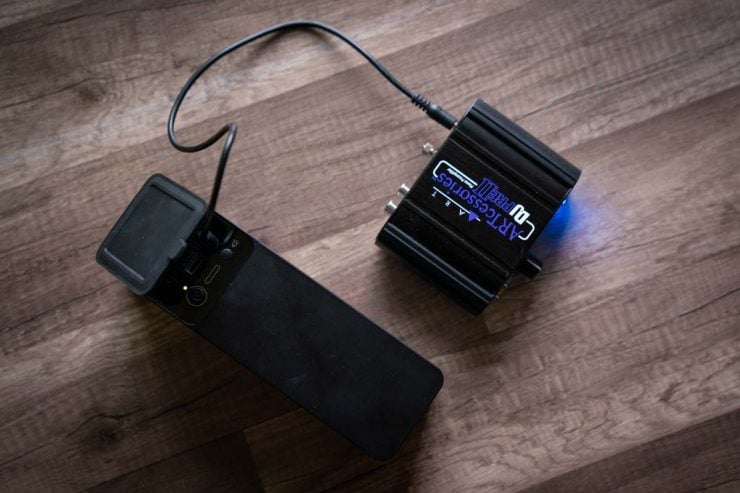
Finally, it’s worth mentioning that the PowerElf is designed to be charged quickly with a 60W solar panel. Fold-up solar panels are pretty common on Amazon, though they cost around $150. The PowerElf requires one that puts out 14-25 volts through a DC5521 plug, and most of them do.
Does it Work?
Yes.
With a couple of caveats. First, the 9-12v barrel jack output works great for high-power consuming applications, but for low ones (less than 150mA, currently), it will not always recognize that a device is connected and the PowerElf will automatically power down after about 30 seconds (though there are workarounds3 To keep the power from shutting down, you can plug in a device to one of the USB ports, like your phone. ). So, it’s great for laptops, not so great for small electronics like an Arduino. I’ve spoken at length with the developers about this, and they’ve explained that they’ll make the production version more sensitive in this regard.
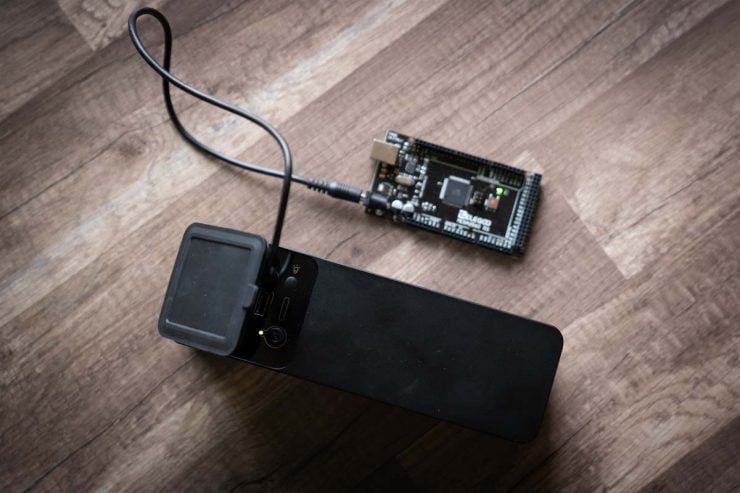
Second, and this is just quibbling, the LED light on the front of the unit works, but it does flicker visibly. If I had to read by it, I suspect it would cause fatigue.
Build and Design
The PowerElf is designed for safety, with 10 layers of protection4 Various instances of short-circuit protection, over-charging and over-discharging protection, reverse voltage protection, etc. and an IP64 housing (water, dust, and shockproof), but alas, I didn’t put it to the test. It’s supposed to withstand water spray from any direction, but I wasn’t about to pour a bucket of water on it. I’ve seen what lithium ion batteries can do when they’re mistreated.
That said, the case is nice and sturdy and all of the ports have rubber doors that seem pretty water resistant. The outer case is a sturdy plastic, but I didn’t drop it on a concrete floor to see how it would hold up. For normal usage, though, it should last just about forever.
Problems? Nothing major. The rubber top cover has to be pushed into place pretty firmly to get a good seal, and it’s easy to push the power and flashlight buttons in the process.
Who is this For?
Let’s face it: if you’re a backpacker and going on a hike across the Andes, this is probably not going to be in your pack (and neither is a laptop) unless you have some serious production obligations. If you do, it absolutely will be. It weighs 2.7lbs and is a little bulky. It fits nicely into the slot in my camera bag for a 70-200mm f/2.8 lens, and it weighs just a little less (this Canon 70-200 weighs 2.9lbs).
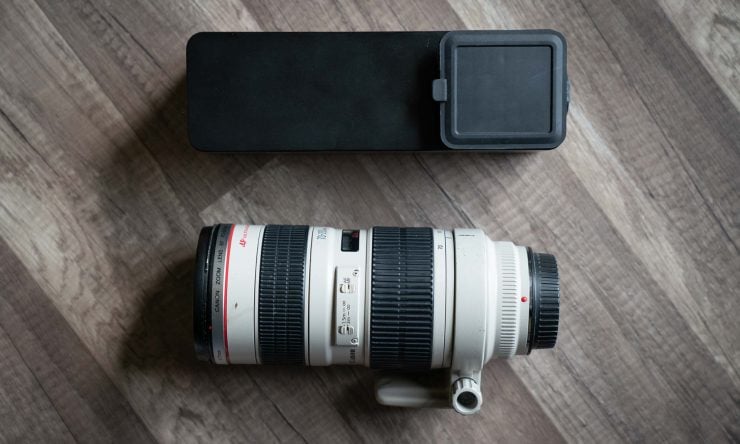
Photographers who are camping a reasonable distance away from their cars will love the PowerElf, as will photographers who are traveling in areas with questionable power availability. If you’re going to be on a long flight to India or Australia and your plane doesn’t have a power outlet, the PowerElf will be your dream come true. And if you’re one of those young, fit photographers who doesn’t mind the weight of an extra 70-200 lens in your pack, then the PowerElf will let you work wherever you happen to be. And of course, journalists and travelers of every sort will appreciate the access to reliable power when away from the desk.
Value
At $129, the PowerElf is a pretty remarkable value, especially because nothing out there on the market seems to match its feature set. There are a couple of similarly sized chargers out there that have built-in inverters and household power outlets, but they’ll hold less than half the power of the Elf and still cost $80–90 or more. Units with similar power capacity generally have a much larger footprint than the PowerElf, and cost significantly more ($160, in this case). Other power banks have similar capacity and price, but lack the output options (no cigarette-lighter port, no USB-C).
If you only need USB outputs, then smaller devices likt he Anker PowerCore 26800 will provide a little more than half the power in a smaller, more portable format. It won’t be able to help with your laptop or Surface, though.
Conclusion
The PowerElf will be a fixture on all of my future photography expeditions. As photographers become more and more dependent on battery-powered devices, having access to reliable power can mean the difference between getting the job done and missing your only opportunity. The PowerElf can provide that power, and in a very safe, sturdy, and portable package.
